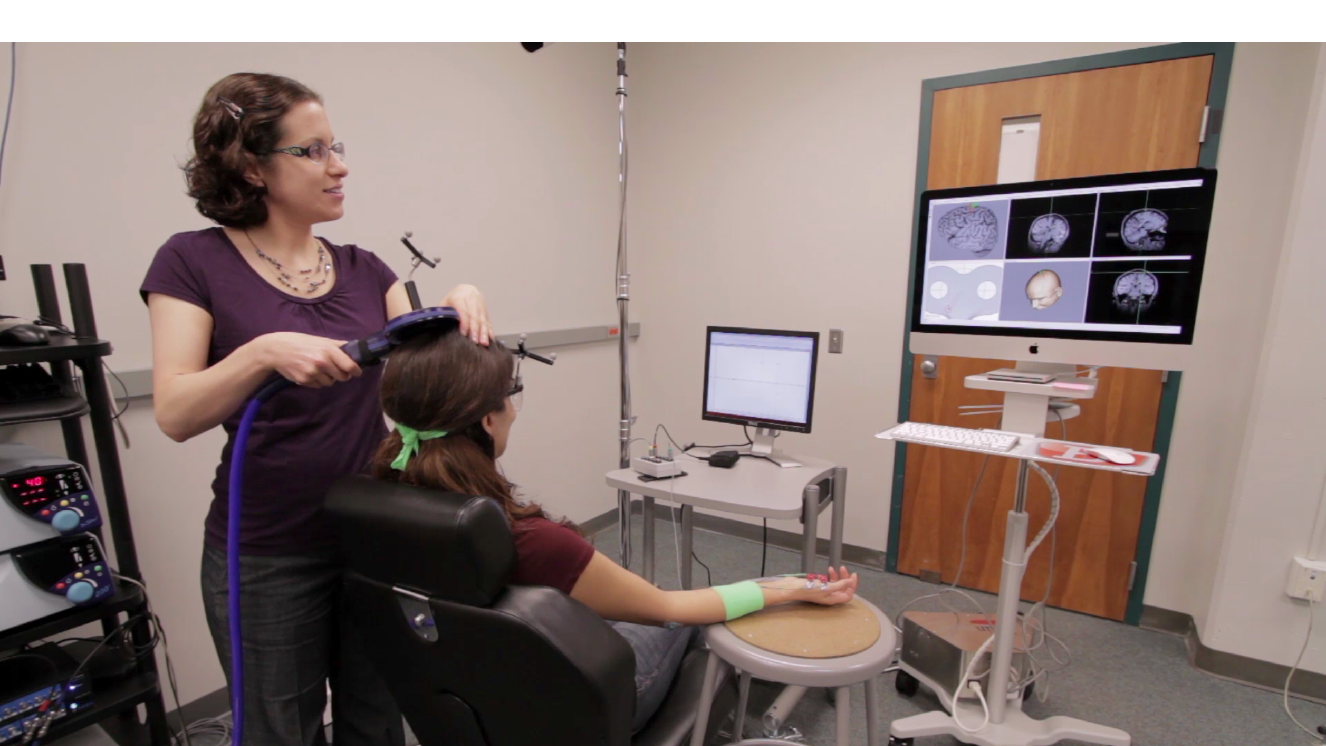How does the brain use sensory information to control movement?We use non-invasive brain stimulation and behavioral tasks to study this question in healthy adults. This research has important implications not only for our understanding of the brain, but also for how we rehabilitate patients who experience sensorimotor deficits after stroke.
|
Skilled movement and body representation. Learning to perform skilled movement requires changes in both how the body moves and how the brain perceives the body. For example, learning to use a computer mouse involves linking a cursor on a screen the brain’s representation of the hand. Many of our studies examine the processes underlying such changes in body representation, seeking to understand how such changes are retained over time and applied in other contexts. Changes in the brain’s representation of the body during skill learning has been little investigated, compared to changes in the movement itself. This leaves an incomplete picture that limits advances in fields such as computational and systems neuroscience and rehabilitation. An important innovation of our research is to test changes in body representation using both body position sense (proprioception), which arises from sensors in the muscles, and visual signals, which arise from viewing one’s own moving body. Integration of sensory signals from multiple sources (multisensory integration) is a fundamental property of the brain.
Future applications of this research. Research in these areas is particularly important for any application where modification of the body representation may be impacted, such as prosthetic devices or virtual reality. Our projects will provide a basis for determining the best ways of training people with such technologies in industrial, military, and medical settings. For example, how a technician trained to operate a telerobotic interface can best retain changes in body representation for the next time he uses it, and how he can more quickly learn to use the interface in an untrained activity. Our research is also important for future advances in clinical research. For example, people who survive a stroke frequently have complex sensorimotor deficits that limit their ability to function. Improved understanding of sensory-motor interactions in the healthy brain will help clinical researchers improve current techniques of motor rehabilitation after stroke.
Our recent work. We use different research tools to answer different research questions. Some of our studies involve only behavioral methods, where we ask participants to point at targets or report what they perceive. These generally use a set of touchscreens or a robotic manipulandum. Some of our studies ask what role is played by specific parts of the brain, or how brain pathways change during a behavior; we use transcranial magnetic stimulation (TMS) for these experiments. We also make use of the excellent neuroimaging resources available here at IU.
Future applications of this research. Research in these areas is particularly important for any application where modification of the body representation may be impacted, such as prosthetic devices or virtual reality. Our projects will provide a basis for determining the best ways of training people with such technologies in industrial, military, and medical settings. For example, how a technician trained to operate a telerobotic interface can best retain changes in body representation for the next time he uses it, and how he can more quickly learn to use the interface in an untrained activity. Our research is also important for future advances in clinical research. For example, people who survive a stroke frequently have complex sensorimotor deficits that limit their ability to function. Improved understanding of sensory-motor interactions in the healthy brain will help clinical researchers improve current techniques of motor rehabilitation after stroke.
Our recent work. We use different research tools to answer different research questions. Some of our studies involve only behavioral methods, where we ask participants to point at targets or report what they perceive. These generally use a set of touchscreens or a robotic manipulandum. Some of our studies ask what role is played by specific parts of the brain, or how brain pathways change during a behavior; we use transcranial magnetic stimulation (TMS) for these experiments. We also make use of the excellent neuroimaging resources available here at IU.






